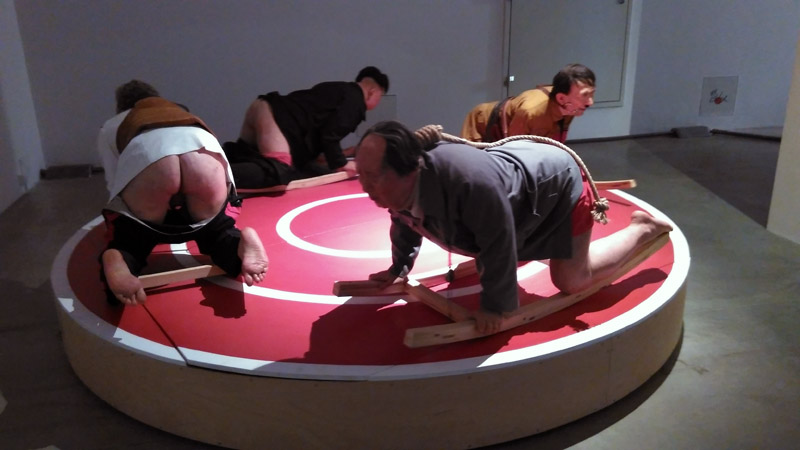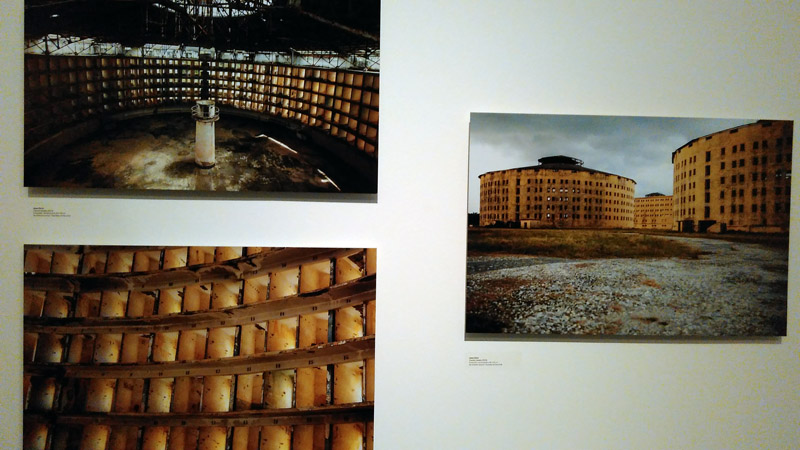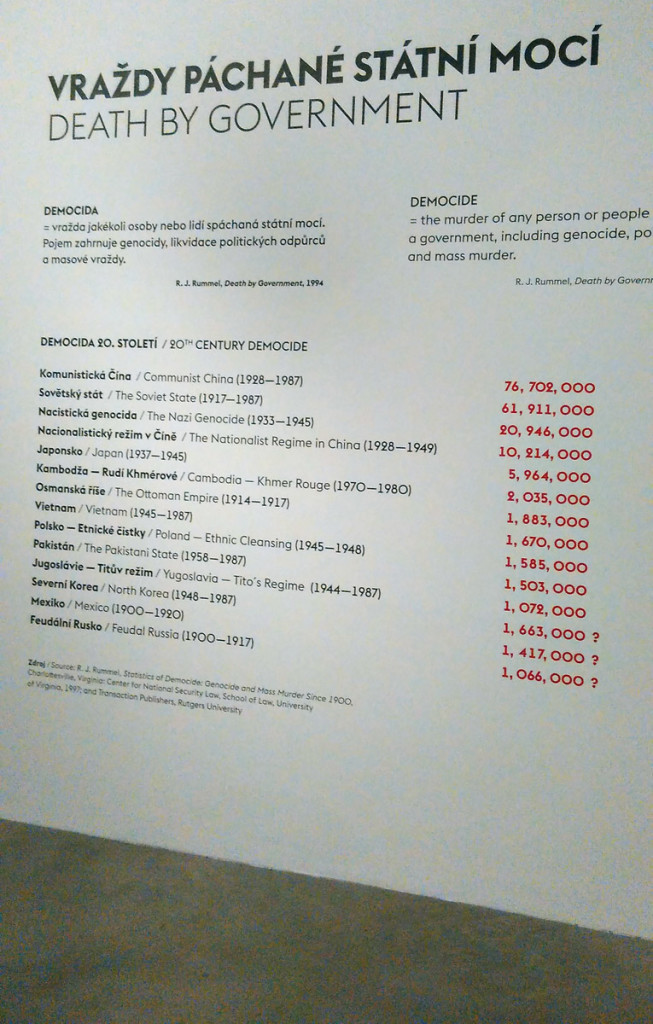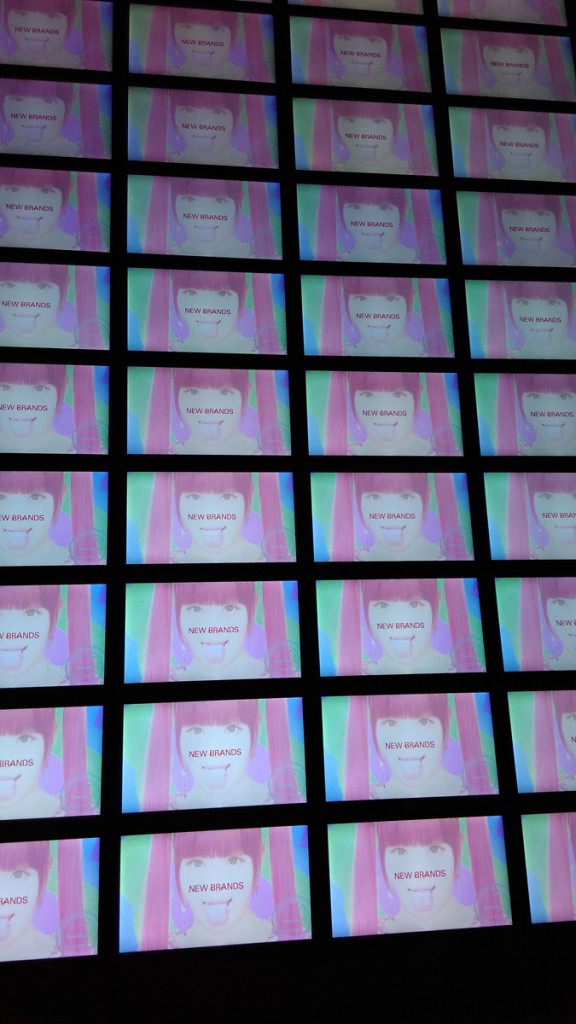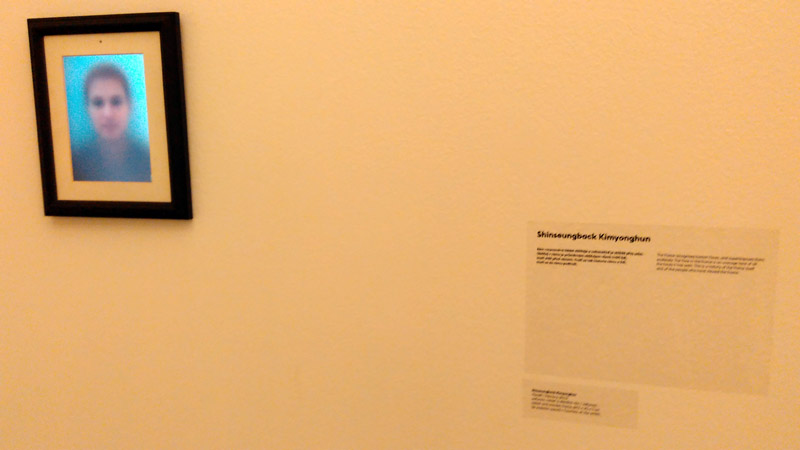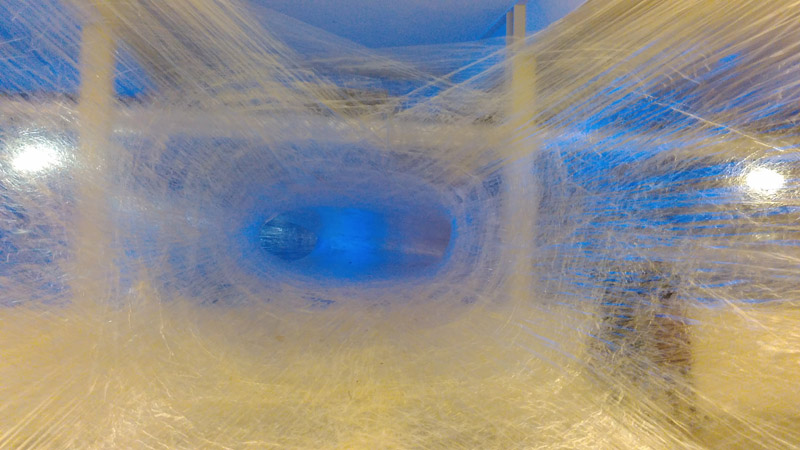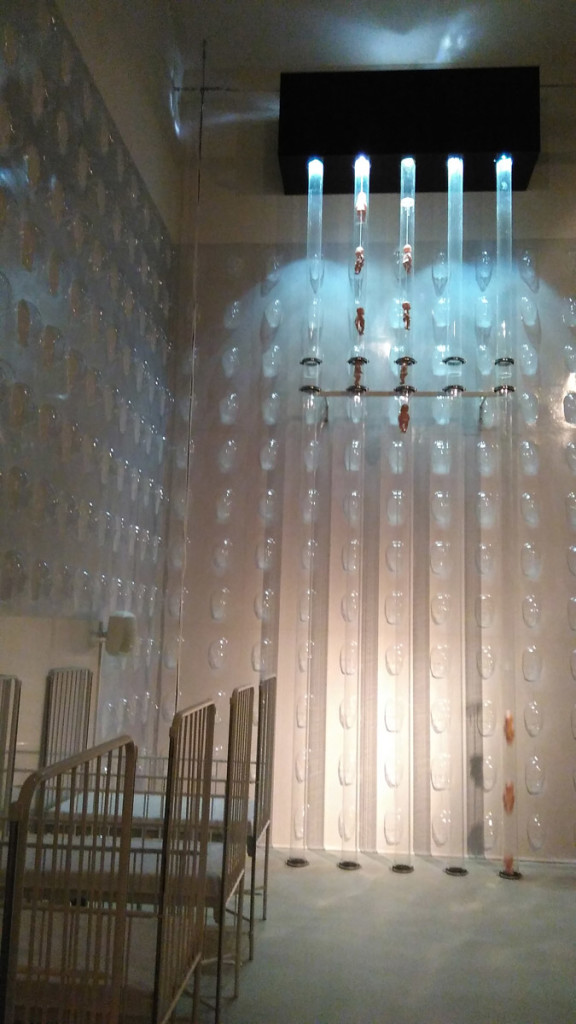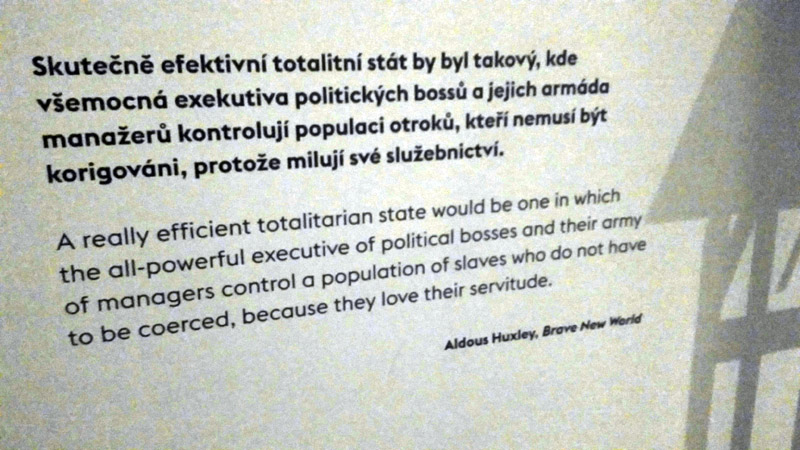Prague, September 11, 2015 – January 25, 2016, http://www.dox.cz
Artists: Barbora Balkova (CZ), Zarko Baseski (MKD), Denis Beaubois (AUS), William Betts (USA), Hans Jürgen-Burkard (GER), Bureau d’Etudes (FR), Michal Cimala (CZ), Paolo Cirio & Alessandro Ludovico (USA/IT), Sylvie Fleury (CHE), Farma v jeskyni / Farm in the Cave (CZ), Jason Florio (UK), Douglas Gordon (UK), Heather Dewey-Hagborg (USA), Jens Hikel (GER), Martina Hozová (CZ), Shinseungback Kimyonghun (KOR), Kristof Kintera (CZ), Jan Macko (CZ), Simon Mckeown (UK), Petr Motycka (collaboration: Filip Hepnar) (CZ), Numen / For Use (HR/AT), Daniel Pesta (CZ), Reynold Reynolds (USA), Jaroslav Rona (CZ), Surveillance Camera Players (USA), Daisuke Takakura (JAP), Lukas Weishaupl (CZ) & Anonymous Curators: Leos Valka, Michaela Silpochova
The exhibition discussed the questions of power, media and control politics. Well-known classics written by Aldous Huxley (Brave New World 1932), George Orwell (1984, 1949) and Ray Bradbury (451° Fahrenheit, 1953) served as a literary and conceptual background for shaping the exhibition sections: The first section was devoted to Orwell’s description of the future – a society is one based on surveillance and disciplinary mechanisms. The second section was based on Huxley and Bradbury, which foresaw more of a psychological manipulation, where subjects do not need to be coerced and controlled from outside, but where subjects act happily at their own will, according to manipulated desires that they see at their very own. The third section went beyond the books, focusing on the effect of retreating and isolating oneself from society, an action which may seem like a solution but is in effect more of a dead end. Lastly, the fourth section, exhibited in the huge 3 floor tower of DOX, presented a kind of postscript, which tried to summarize or recreate the whole lifecycle of consent production.
From my position of a temporary Hong Kong resident and visitor to Czech Republic, my first reaction upon entering the show was astonishment and euphoria. This kind of exhibition would be completely inconceivable in any of the East Asian countries, even those supposedly “democratic” and “free”, maybe except Taiwan which seems to be a small and sadly diminishing beacon of hope in contrast to its neighbors. My first reaction thus was also a feeling of relief – I was back in Europe, where despite all the recent problems, it was possible to voice one’s opinion without having to immediately fear for one’s livelihood or life.
Once the initial euphoria wore off, and once I moved back to thinking in terms of the ‘art exhibition’ category, I started to wonder whether the show has not been to blunt and too direct, slightly over-educative with its grand all-encompassing narrative. Over the years, I realized that this is generally the direction which DOX wants to take. Most of the exhibitions do have this ‘democratic’ undertone, making great effort to be accessible to a broad public and opening up topics that are of broad public interest instead of staying in the comfort zone of the self-referential art world formalism and conceptualism. Once one acknowledges that this is the position DOX willingly takes, one can be fine with the way exhibition was presented.
The form of the exhibition was also strongly influenced by the involvement of the museum founder, Leos Valka. Not only is he the museum founder, director and shareholder – as part of this exhibition, he also took on the role of the initiator, curator (together with Michaela Silpochova) and even – behold – that of an artist. It is completely understandable he wants to have his say the museum direction, and it is also understandable that he co-curated this exhibition that focused on topics that seems to be very close to his heart. However, his involvement as the ‘artist’ (together with Jens Hikel) in the last (fourth) section presented in the 3 floor high tower space, was the most problematic section of the exhibition, and could as well been left out without impacting the strength of the prior three sections. Hopefully this was an expression of uncontrolled personal over-enthusiasm for the topic and no foreshadow of a future trend.
In the end I would like to return to the beginning of my writing. No matter some mishaps and glitches took place, this exhibition has to be understood and judged as a personal/institutional statement and expression of a worthy and well-meant concern. The show was in line with my assumptions of the center’s ‘brand’: Being open to a general public and presenting engaging art addressing themes the public is or should be concerned about. As such, DOX is irreplaceable on the Czech art scene – there is no other like DOX.
